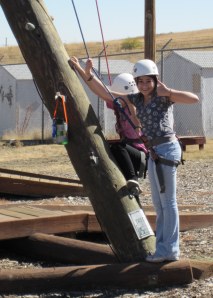
Organizational Structures
High-performing schools with middle grades are learning organizations that establish norms, structures, and organizational arrangements to support and sustain their trajectory toward excellence.
1. A shared vision of what a high-performing school is and does drives every facet of school change.
- The shared vision drives constant improvement.
- Shared, distributed, and sustained leadership propels the school forward and preserves its institutional memory and purpose.
- Everyone knows what the plan is and the vision is posted and evidenced by actions.
2. The principal has the responsibility and authority to hold the school-improvement enterprise together, including day-to-day know-how, coordination, strategic planning, and communication.
- Lines of leadership for the school’s improvement efforts are clear.
- The school leadership team has the responsibility to make things happen.
- The principal makes sure that assignments are completed.
3. The school is a community of practice in which learning, experimentation, and time and opportunity for reflection are the norm.
- School leadership fosters and supports interdependent collaboration.
- Expectations of continuous improvement permeates the school culture.
- Everyone’s job it to learn.
4. The school and district devote resources to content-rich professional development, which is connected to reaching and sustaining the school vision and increasing student achievement.
- Professional development is intensive, of high quality, ongoing, and relevant to middle-grades education.
- Teachers get professional support to improve instructional practice (i.e., classroom visitations, peer coaching, demonstrations lessons, etc.)
- Opportunities for learning increase knowledge and skills, challenge outmoded beliefs and practices, and provide support in the classroom.
5. The school is not an island unto itself; it is a part of a larger educational system, i.e., districts, networks and community partnerships.
- There are deliberate vertical articulation and transition programs between feeder elementary schools and destination high schools.
- The district supports (funding and time) its schools’ participation in best practice networks, associations, learning communities, and professional development focused on middle grades improvement and achievement.
- School and district work collaboratively to bring coherence to curriculum, instruction, assessment, intervention, data collection, analysis, and accountability for student achievement.
6. The school staff holds itself accountable for the students’ success.
- The school collects, analyzes, and uses data as a basis for making decisions.
- The administrators and faculty grapple with school-generated evaluation data to identify areas for more extensive and intensive improvement.
- The staff delineates benchmarks, and insists upon evidence and results.
- The school staff intentionally and explicitly reconsiders its vision and practices when data call them into question.
7. District and school staff possess and cultivate the collective will to persevere, believing it is their business to produce increased achievement and enhanced development of all students.
- The faculty and administrators see barriers as challenges, not problems.
8. The school and district staffs work with colleges and universities to recruit, prepare, and mentor novice and experienced teachers.
- Principals insist on having teachers who promote young adolescents’ intellectual, social, emotional, physical, and ethical growth.
9. The school includes families and community members in setting and supporting the school’s trajectory toward high performance.
- The administrators and teachers inform families and community members about the school’s goals for student success and the students’ responsibility for meeting those goals.
- The administrators and teachers engage all stakeholders in ongoing and reflective conversation, consensus building, and decision making about governance to promote school improvement.